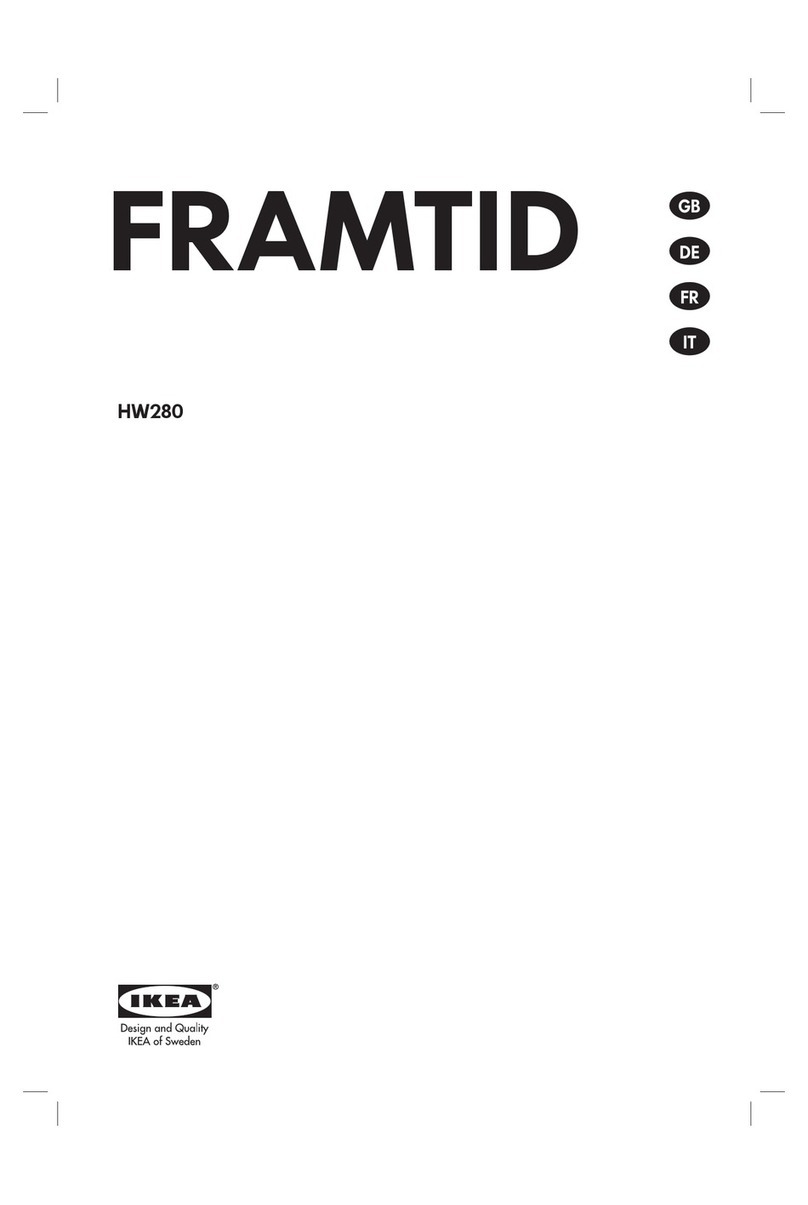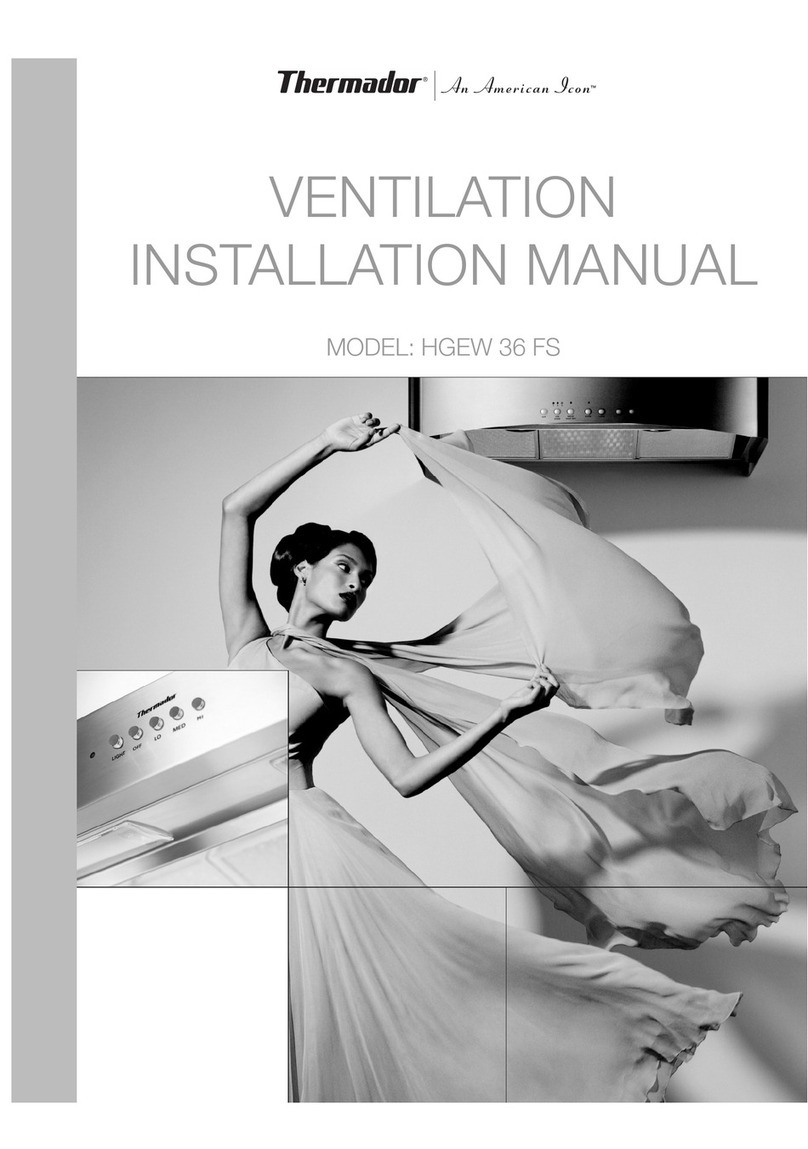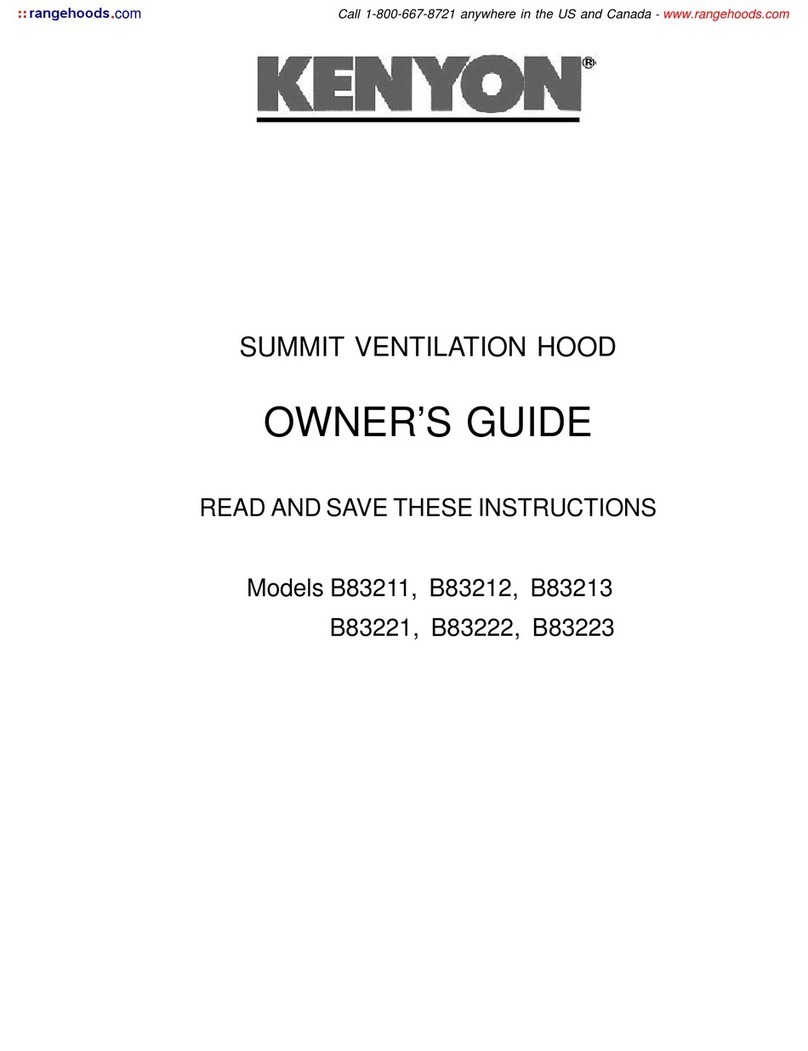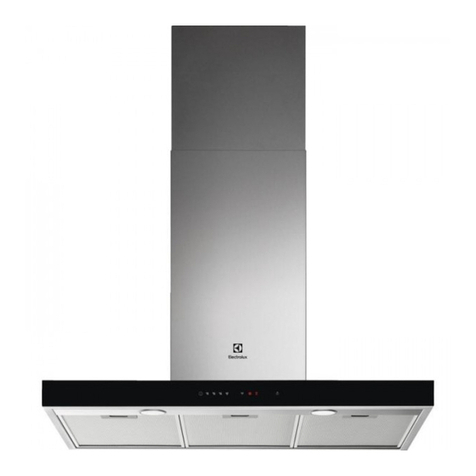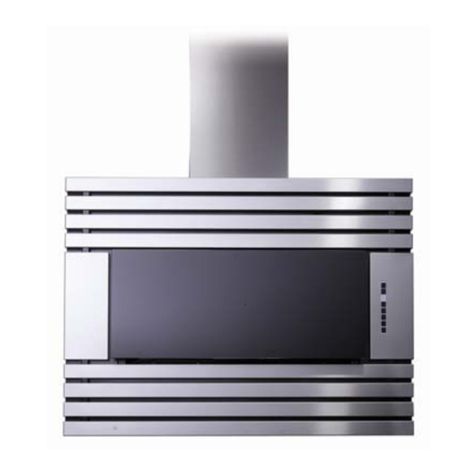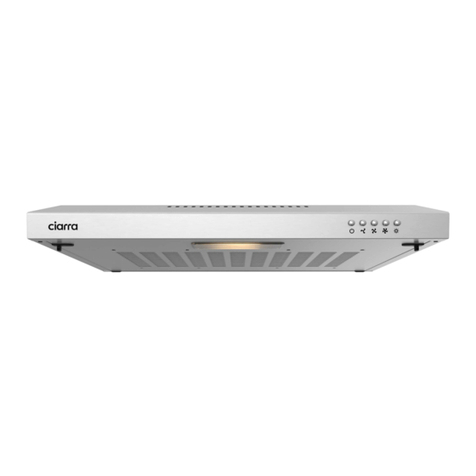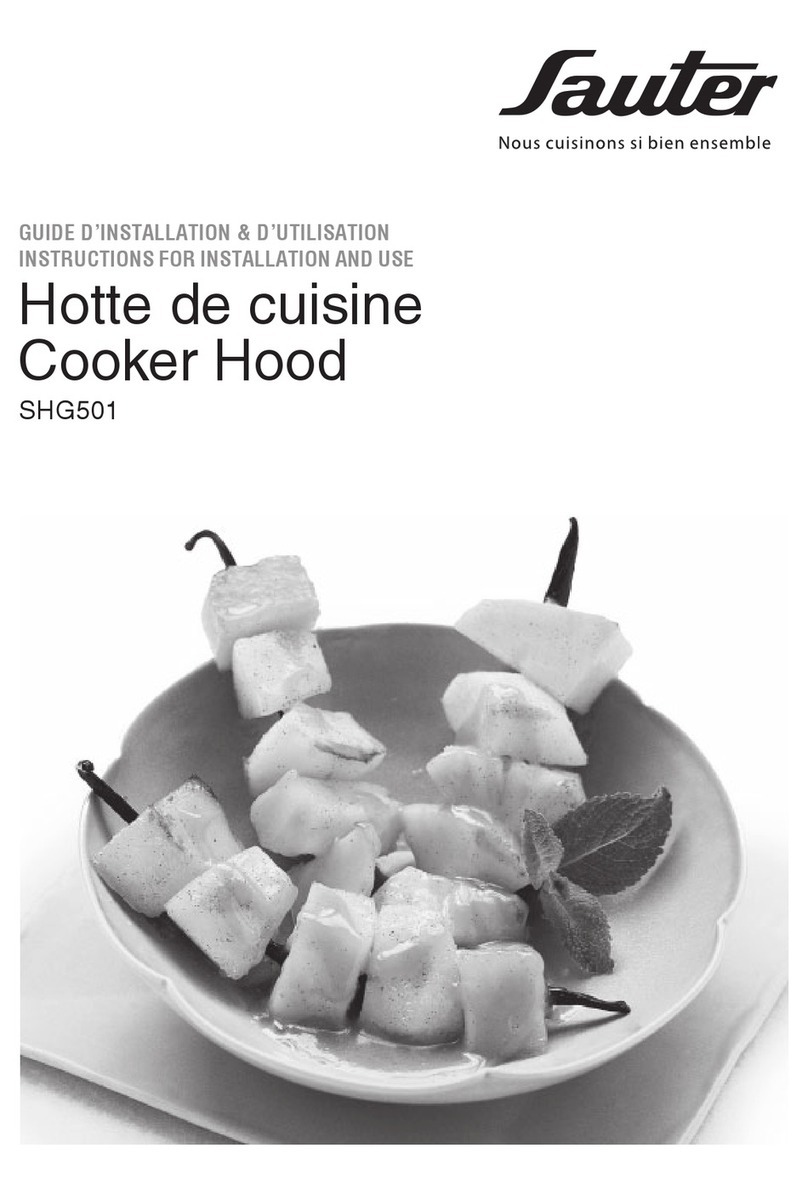ImportantSafetyInstructions
Take care when using cleaning agents or detergents.
Select products suitable for use in household cooking area only.
Certainlocalesrequiremake-upaircalculationsfortotalairflow.
ConsultyourlocalcodesandanHVACprofessionalbeforeinstallingorusingthishood.
CAUTION- To reduce risk of fireandtoproperly exhaust air, be sure toductairoutside – Do not vent exhaustairinto
spaces within walls or ceilings or into attics, crawl spaces, or garages.
CAUTION-ForGeneralVentilatingUseOnly.DoNotUseToExhaustHazardousOrExplosiveMaterialsAndVapors.
WARNING– TO REDUCE THE RISK OF FIRE, ELECTRIC SHOCK, OR INJURY TO PERSONS, OBSERVE THE
FOLLOWING:
a. Usethisunit only in the manner intended by the manufacturer.If you have questions, contact the manufacturer.
b. Beforeservicingorcleaningunit,switchpoweroffatservicepanelandlocktheservicedisconnectingmeanstoprevent
powerfrombeingswitchedonaccidentally.Whentheservicedisconnectingmeanscannotbelocked,securelyfasten
a prominent warning device, such as a tag, to the service panel.
WARNING– TO REDUCE THE RISK OF A RANGE TOP GREASE FIRE:
a. Never leave surface units unattended at high settings. Boilovers cause smoking and greasy spillovers that may
ignite. Heat oils slowly on low or medium settings.
b. Always turn hood ON when cooking at high heat or when cooking flaming foods.
c. Clean ventilating fans frequently. Grease should not be allowed to accumulate on fan or filter.
d. Useproperpan size. Always use cookware appropriate forthe size of the surface element.
WARNING–TOREDUCETHERISKOFINJURYTOPERSONSINTHEEVENTOFARANGETOPGREASEFIRE,
OBSERVETHEFOLLOWING:
a. SMOTHER FLAMES with a close-fitting lid, cookie sheet, or metal tray, then turn off the burner. BE CAREFUL TO
PREVENTBURNS. Iftheflames donot gooutimmediately, EVACUATEANDCALL THEFIREDEPARTMENT.
b. NEVER PICK UP A FLAMING PAN – You may be burned.
c. DO NOT USE WATER, including wet dishcloths or towels – a violent steam explosion will result.
d. Usean extinguisher ONLY if:
1. You know you have a Class ABC extinguisher, and you already know how to operate it.
2. The fire is small and contained in the area where it started.
3. Thefiredepartmentisbeingcalled.
4. You can fight the fire with your back to an exit.
WARNING– TO REDUCE THE RISK OF FIRE, ELECTRIC SHOCK, OR INJURY TO PERSONS, OBSERVE THE
FOLLOWING:
a) Installationworkandelectricalwiringmustbedonebyqualifiedperson(s)inaccordancewithallapplicablecodesand
standards,includingfire-ratedconstruction.
b) Sufficient air is needed for proper combustion and exhausting of gases through the flue (chimney) of fuel burning
equipmenttopreventbackdrafting.Followtheheatingequipmentmanufacturer’sguidelineandsafetystandardssuch
as those published by the National Fire Protection Association (NFPA), and the American Society for Heating,
RefrigerationandAirConditioningEngineers(ASHRAE),andthelocalcodeauthorities.
c) When cutting or drilling into wall or ceiling, do not damage electrical wiring and other hidden utilities.
d) Ducted fans must always be vented to the outdoors.
WARNING -TOREDUCETHERISKOFFIRE,USEONLYMETALDUCTWORK.
WARNING-ElectricalShockHazard-Canresultinseriousinjuryordeath.Disconnectappliancefromelectricpower
beforeservicing.Ifequipped,thefluorescentlightbulbcontainssmallamountsofmercurywhichmustberecycledordisposed
of according to Local, State, and Federal Codes.




